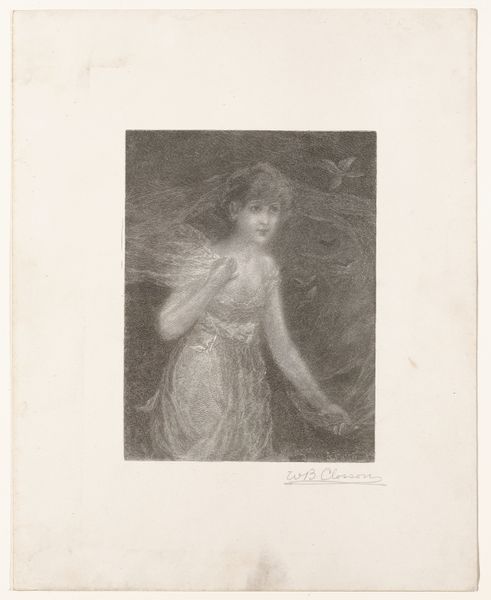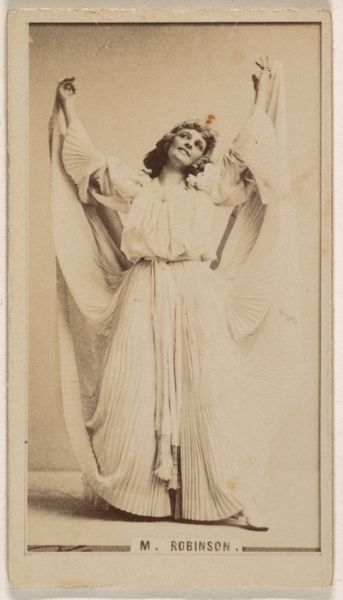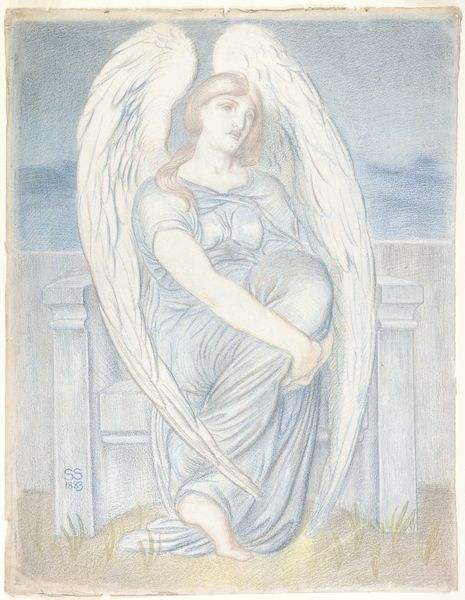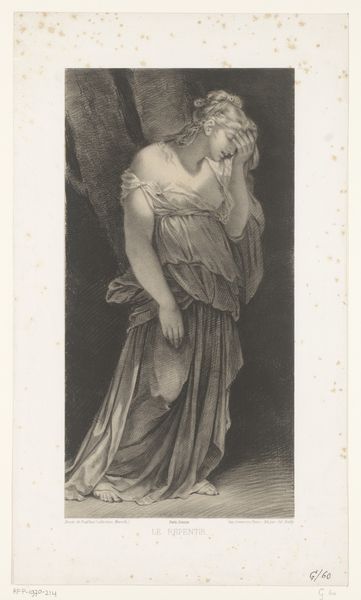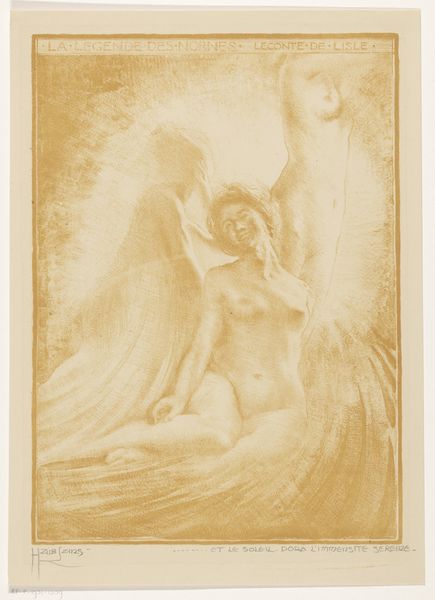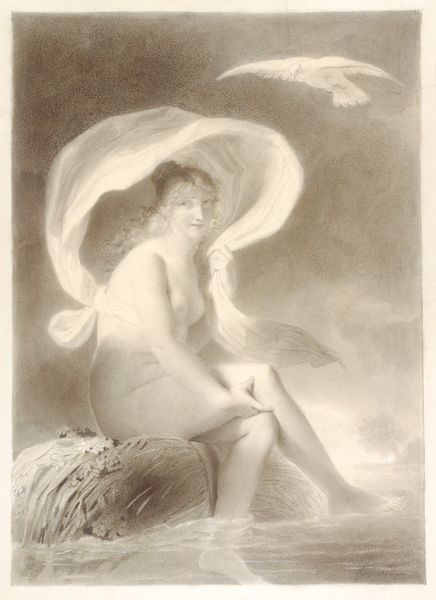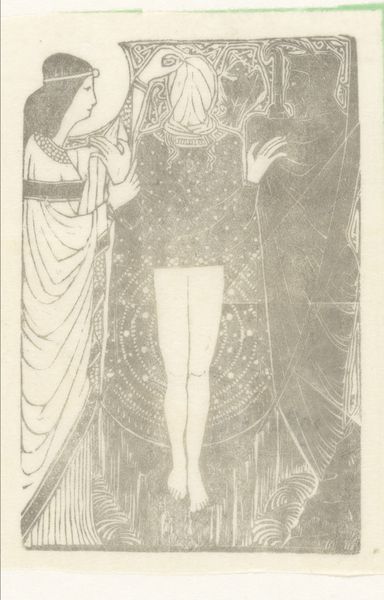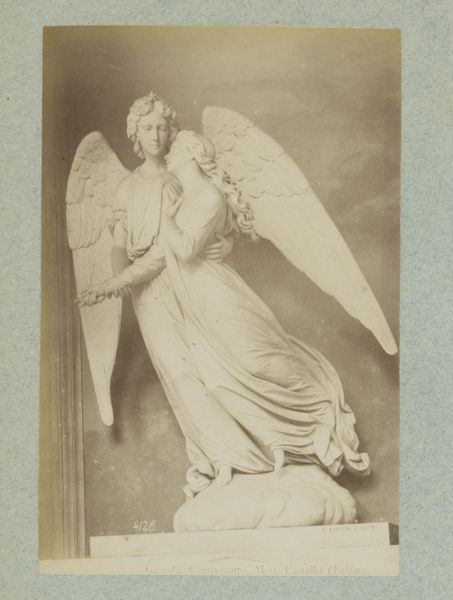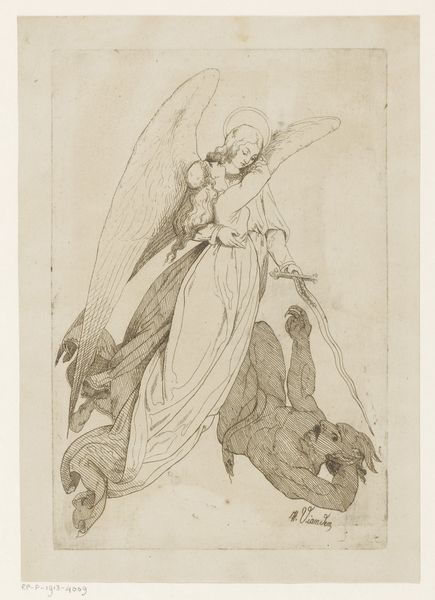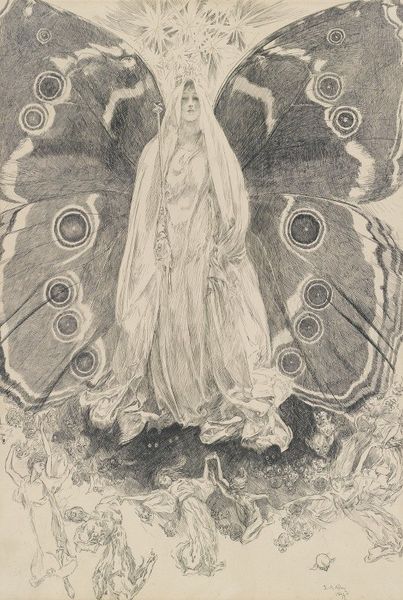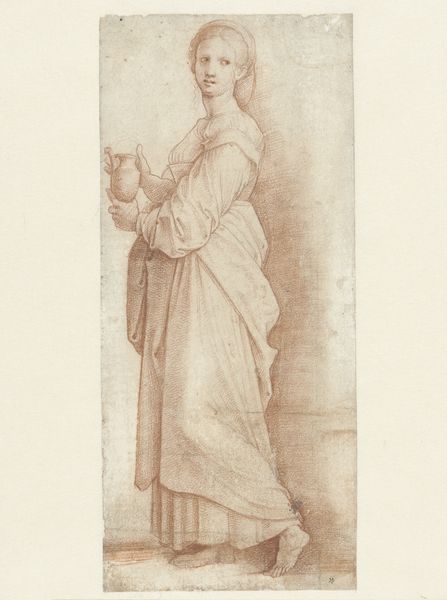
Dimensions: 9 1/4 x 4 1/2 in. (23.5 x 11.43 cm) (plate)12 1/4 x 7 5/8 in. (31.12 x 19.37 cm) (sheet)
Copyright: Public Domain
Editor: Here we have Robert Hoskin’s “The Angel of Sleep,” made sometime in the 19th century, currently housed in the Minneapolis Institute of Art. It's a print, a pencil and wood-engraving drawing. I am immediately drawn to the ethereal quality and the melancholic mood. What do you see in this piece? Curator: It's interesting you mention "ethereal." To me, that highlights the romantic fascination with not just the spiritual but the very *materials* used to represent it. Hoskin's choice of pencil and wood engraving are crucial. What social and material conditions allowed for such readily available printmaking techniques? Editor: Well, mass production was definitely on the rise. So, you are saying the very accessibility of these materials informs the artwork itself? Curator: Precisely. Think of it this way: the "Angel" becomes reproducible. Sleep, once a private affair, is now disseminated. Is it a commentary on industrialization’s intrusion into private life? Are we meant to think of the individual increasingly lost in mass production? Editor: That's a fascinating way to think about it. It challenges the romanticism I initially perceived. I was focused on the content, but you are asking about the broader impact and availability due to materials. Curator: It begs the question, how does the process and resulting product reflect and shape society? Editor: So, by examining the materiality and production, we are not just looking at art, but society itself. Curator: Exactly. Thank you for the opportunity to engage with your perceptions of materiality in this piece; I have learned so much today. Editor: Yes, my understanding of this piece has expanded exponentially with this dialogue on materiality!
Comments
No comments
Be the first to comment and join the conversation on the ultimate creative platform.
